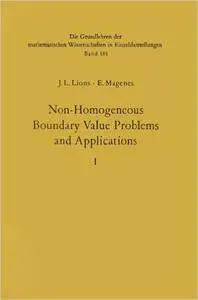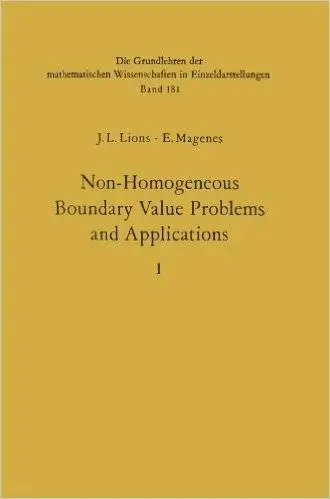Jacques Louis Lions, Enrico Magenes, P. Kenneth, "Non-Homogeneous Boundary Value Problems and Applications: Vol. 1"
1972 | pages: 375 | ISBN: 3642651631 | DJVU | 2,9 mb
1972 | pages: 375 | ISBN: 3642651631 | DJVU | 2,9 mb
1. We describe, at first in a very formaI manner, our essential aim. n Let m be an op en subset of R , with boundary am. In m and on am we introduce, respectively, linear differential operators P and Qj' 0 ~ i ~ 'V. By "non-homogeneous boundary value problem" we mean a problem of the following type: let f and gj' 0 ~ i ~ 'v, be given in function space s F and G , F being a space" on m" and the G/ s spaces" on am" ; j we seek u in a function space u/t "on m" satisfying (1) Pu = f in m, (2) Qju = gj on am, 0 ~ i ~ 'v«])). Qj may be identically zero on part of am, so that the number of boundary conditions may depend on the part of am considered 2. We take as "working hypothesis" that, for fEF and gjEG , j the problem (1), (2) admits a unique solution u E U/t, which depends 3 continuously on the data . But for alllinear probIems, there is a large number of choiees for the space s u/t and {F; G} (naturally linke d together). j Generally speaking, our aim is to determine families of spaces 'ft and {F; G}, associated in a "natural" way with problem (1), (2) and con j venient for applications, and also all possible choiees for u/t and {F; G} j in these families.
My Links



